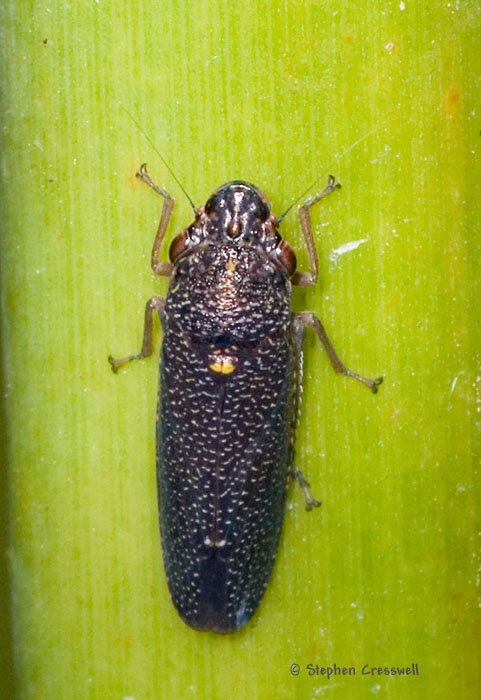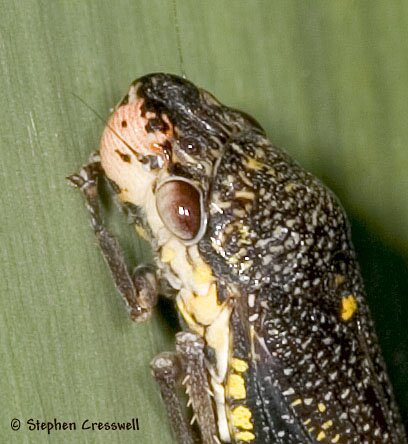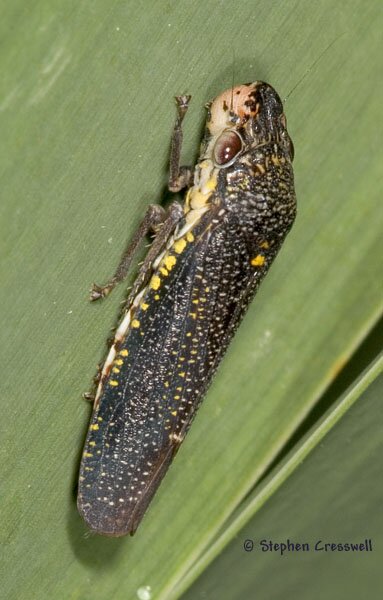
Family: Cicadellidae
Subfamily: Cicadellinae
Length: typically 11-12 mm
The photographs shown here were made in West Virginia in June and September, but adults of this species should be active in the state in all but the coldest months.
Female Paraulacizes irrorata lay their eggs in woody twigs, and in the petioles of diverse plants. The eggs are sometimes parasitized by a wasp, Gonatocerus fasciatus.
Mason and Yonke (1971) studied the life history of Paraulacizes irrorata in the laboratory, using Sunflower as the host plant. They found that females laid an average of 162 eggs each, all in the sunflower stem, and that the eggs took an average of 11 days to hatch. The entire development period, from the laying of the egg to the final molt, averaged 51 days. Female nymphs took 6 days longer to develop, on average, than males.
Mason and Yonke commented that the nymphs were pretty lethargic in the early stages, with one nymph remaining on the same leaf more than 25 days. Instars 1-4 fed on the undersides of leaves, while the fifth instar nymphs and the adults fed on the main stem of the plant. While Mason and Yonke did not ascertain the total longevity of the average Paraulacizes irrorata, they did note that one male lived 206 days in the laboratory.
In the wild, Paraulacizes irrorata overwinters as an adult, seeking shelter in leaf litter surrounding shrubs and trees. In the Spring the adults move to more open areas and reproduce on herbaceous plants. When the herbaceous plants begin to die back in autumn, the adults return to the forest and the leaf litter. Mason and Yonke note, "Large migrations of P. irrorata were noted in October" migrations from fields to woods.

David A. Young (1968) erected this genus, while the species was first described by Fabricius in 1794.

The Speckled Sharpshooter ranges throughout the southeastern United States and into Mexico. In West Virginia it is widespread. In recent years it has been expanding its range northward into New England and Canada.

|
|
|


